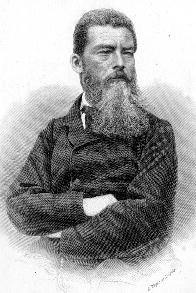
Written: 1841
Source: Introduction from The Fiery Brook, remainder from The Essence of Christianity
Translated: Introduction translated by Zawar Hanfi, 1972, remainder translated by George Eliot, 1854.
Transcribed: Andy Blunden;
HTML Markup: Andy Blunden.
Table of Contents:
Preface to the Second Edition, 1843
I: Introduction
§1VIIIIBeing of Man in General
§2XIIIIEssence of Religion in General
Part I: The True or Anthropological Essence of Religion
IIXVIIIGod as Being of Understanding
IIIXVIIGod as Moral Being or Law
IVXIIIIGod as Love
VXIIIIIThe Suffering God
VIXIIIIThe Trinity and Mother of God
VIIXIIIThe Logos and Divine Image
VIIIXIIThe Cosmogonical Principle
IXVIIIINature in God
XVIIIIICreation out of Nothing
XIVIIIICreation in Judaism
XIIVIIIThe Mystery of Prayer
XIIIVIIFaith and the Miracle
XIVIIIIThe Resurrection
XVIIIIIThe Personal God
XVIIIIIChristianity and Heathenism
XVIIIIICelibacy and Monachism
XVIIIIIHeaven & Immortality
Part II. The False or Theological Essence of Religion
XIXIIIIThe Essential Standpoint of Religion
XXIIIIIContradiction in existence of God
XXIIIIIContradiction in revelation of God
XXIIIIIContradiction in the nature of God
XXIIIIIThe Speculative Doctrine of God
XXIVIIContradiction in the Trinity
XXVIIIContradiction in the Sacraments
XXVIIIFaith & Love
XXVIIIConcluding Application
“Then came Feuerbach’s Essence of Christianity. With one blow it pulverised the contradiction, in that without circumlocutions it placed materialism on the throne again. ... The spell was broken; the ‘system’ was exploded and cast aside, and the contradiction, shown to exist only in our imagination, was dissolved. One must oneself have experienced the liberating effect of this book to get an idea of it. Enthusiasm was general; we all became at once Feuerbachians...” Engels